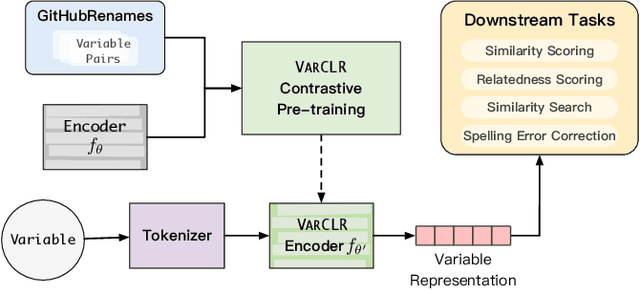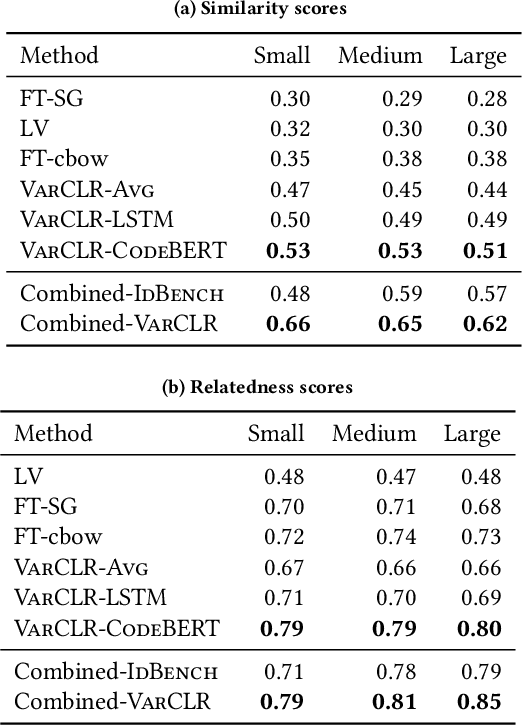Jeremy Lacomis
VarCLR: Variable Semantic Representation Pre-training via Contrastive Learning
Dec 05, 2021



Abstract:Variable names are critical for conveying intended program behavior. Machine learning-based program analysis methods use variable name representations for a wide range of tasks, such as suggesting new variable names and bug detection. Ideally, such methods could capture semantic relationships between names beyond syntactic similarity, e.g., the fact that the names average and mean are similar. Unfortunately, previous work has found that even the best of previous representation approaches primarily capture relatedness (whether two variables are linked at all), rather than similarity (whether they actually have the same meaning). We propose VarCLR, a new approach for learning semantic representations of variable names that effectively captures variable similarity in this stricter sense. We observe that this problem is an excellent fit for contrastive learning, which aims to minimize the distance between explicitly similar inputs, while maximizing the distance between dissimilar inputs. This requires labeled training data, and thus we construct a novel, weakly-supervised variable renaming dataset mined from GitHub edits. We show that VarCLR enables the effective application of sophisticated, general-purpose language models like BERT, to variable name representation and thus also to related downstream tasks like variable name similarity search or spelling correction. VarCLR produces models that significantly outperform the state-of-the-art on IdBench, an existing benchmark that explicitly captures variable similarity (as distinct from relatedness). Finally, we contribute a release of all data, code, and pre-trained models, aiming to provide a drop-in replacement for variable representations used in either existing or future program analyses that rely on variable names.
Learning to Superoptimize Real-world Programs
Sep 28, 2021



Abstract:Program optimization is the process of modifying software to execute more efficiently. Because finding the optimal program is generally undecidable, modern compilers usually resort to expert-written heuristic optimizations. In contrast, superoptimizers attempt to find the optimal program by employing significantly more expensive search and constraint solving techniques. Generally, these methods do not scale well to programs in real development scenarios, and as a result superoptimization has largely been confined to small-scale, domain-specific, and/or synthetic program benchmarks. In this paper, we propose a framework to learn to superoptimize real-world programs by using neural sequence-to-sequence models. We introduce the Big Assembly benchmark, a dataset consisting of over 25K real-world functions mined from open-source projects in x86-64 assembly, which enables experimentation on large-scale optimization of real-world programs. We propose an approach, Self Imitation Learning for Optimization (SILO) that is easy to implement and outperforms a standard policy gradient learning approach on our Big Assembly benchmark. Our method, SILO, superoptimizes programs an expected 6.2% of our test set when compared with the gcc version 10.3 compiler's aggressive optimization level -O3. We also report that SILO's rate of superoptimization on our test set is over five times that of a standard policy gradient approach and a model pre-trained on compiler optimization demonstration.
 Add to Chrome
Add to Chrome Add to Firefox
Add to Firefox Add to Edge
Add to Edge